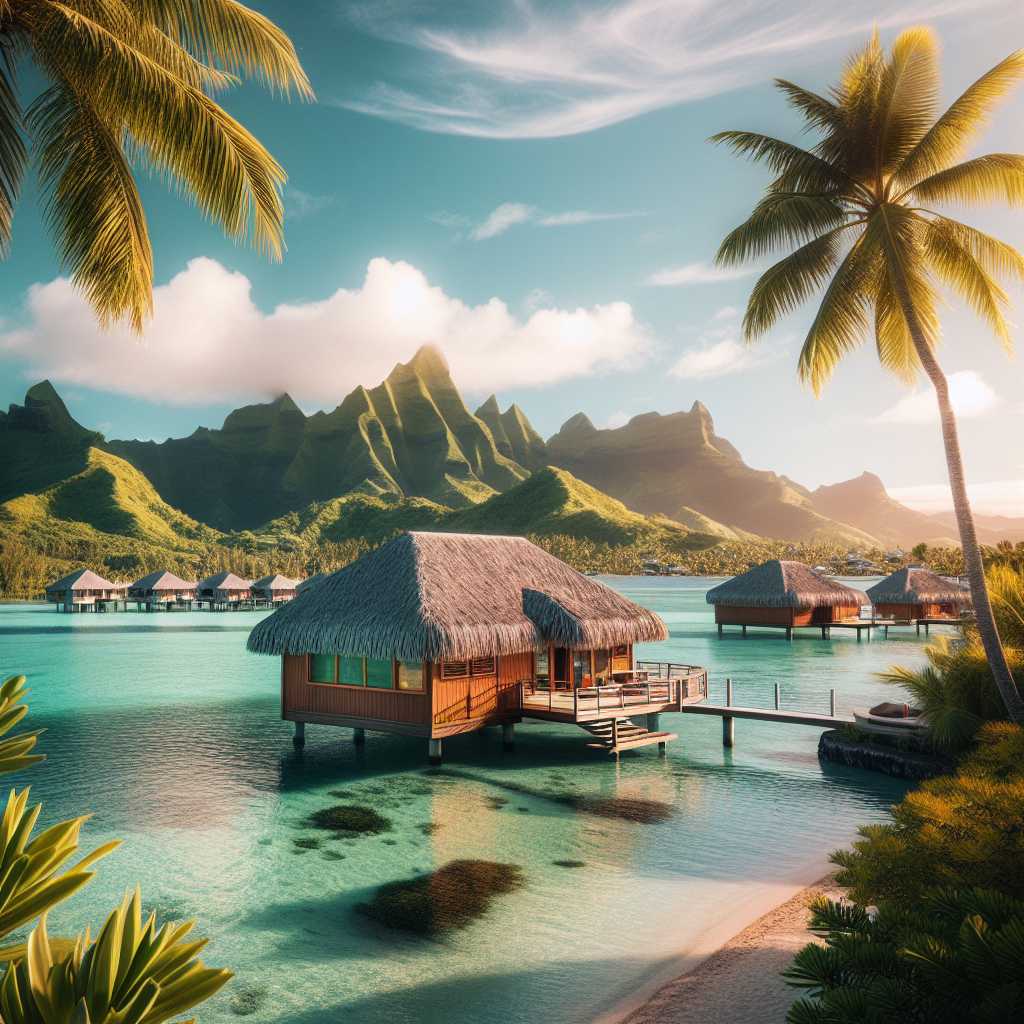Exploring Tahiti: The Crown Jewel of the Pacific Islands
Tahiti, the largest island in the Windward group of French Polynesia, embodies the allure of the South Pacific with its enchanting mix of natural beauty and cultural richness. Known for its volcanic mountains, turquoise lagoons, and lush landscapes, this Island has captivated the imaginations of travelers, artists, and writers for centuries. Inhabited by Polynesians since ancient times, it later became part of the French colonial empire and remains an overseas collectivity of France to this day.
Geographical Wonders of Tahiti
The geographical makeup of Tahiti is as dramatic as it is diverse. Divided into Tahiti Nui (the larger, western section) and Tahiti Iti (the smaller, eastern peninsula), the island’s terrain ranges from high mountain peaks wrapped in verdant foliage to flat coastal plains with black sand beaches. Within these versatile landscapes thrive a wide range of plant and animal species, many of which are endemic to the region.
Pape’ete: A Cultural Hub
The capital city of Pape’ete is a bustling hub that offers a distinct blend of French sophistication and Polynesian warmth. The city holds both government and commercial buildings but maintains an air of tranquility with its seaside boulevards and abundant greenery. Visitors to Pape’ete can enjoy local markets selling vibrant textiles, handcrafted goods and a wide array of fresh produce and seafood showcasing the island’s rich resources.
Tourism’s Embrace
Tourism is one key factor contributing to Tahiti’s economy. The island appeals to a broad spectrum of visitors, from luxury seekers who favor 5-star overwater bungalow resorts to backpackers drawn to its rugged interior for hiking and adventure sports. Iconic activities such as snorkeling in coral gardens, surfing world-renowned breaks, or simply relaxing on a picturesque beach continue to be top draws.
Artistic Inspiration- From Gauguin to Modern Day
Tahiti and its surrounding islands have long been a magnet for artists. Perhaps no one is more associated with these islands than the post-Impressionist painter Paul Gauguin who spent his later years here capturing the landscapes and people in his famous works. Tahiti continues to inspire a thriving local arts scene, encompassing everything from traditional dance and music to modern visual arts.
Cultural Richness and Traditions
Culture in Tahiti is an amalgamation of indigenous traditions and French influence. The Polynesian heritage is evident through language, religious customs, and especially dance. Traditional performances of ‘Ori Tahiti are an important cultural facet which is not solely for entertainment but also a means of storytelling and preserving historical tales. Other celebrated traditions include tattoo artistry, which has seen a major revival in recent years.
Environmental Conservation
Amidst Tahiti’s natural splendor are efforts toward environmental conservation. Activities such as reef restoration projects and sustainable tourism initiatives reflect an increasing awareness around preserving this paradise for future generations. With climate-related challenges such as rising sea levels posing a threat to its fragile ecosystems, Tahiti demonstrates resilience and commitment to protecting its unique habitat.
Economic Overview
While tourism drives much of Tahiti’s economy, it also relies on other industries such as agriculture, pearl farming, and limited manufacturing. The island exports goods such as vanilla, fruits, fish products, and—the most iconic of all—Tahitian cultured pearls.
